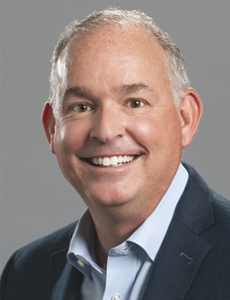High Medical Malpractice Premiums Are Driving OB-GYNs Out of Business. Why That Is Detrimental to Women Everywhere

The United States is facing a shortage of doctors, and this shortage is especially acute in the field of obstetrics and gynecology.
In 2017, a report from the American College of Obstetricians and Gynecologists projected a shortage of up to 22,000 obstetricians by 2050. Already, more than half of all counties in the U.S. lack a single OB-GYN. These primarily rural counties are home to more than 10 million women.
It goes without saying that this lack of access could have profound negative consequences. As fewer women receive prenatal care, we can expect to see the nation’s already troubling maternal mortality rate rise.
As the CDC reports, maternal mortality has been climbing steadily for the past 25 years (rising from 17.4 deaths per 100,000 live births in 2018 to 23.8 in 2020), and the U.S. now ranks last in maternal mortality among OECD nations despite spending two and a half times the OECD average.
These figures split along racial lines. Due partly to a lack of access to care, Black women are three times as likely to die from pregnancy-related causes as white women, the CDC reports, further highlighting how important it is that all expectant mothers have access to a trained obstetrician.
While the upstream causes of the shortage are complex, the insurable risks of OB-GYNs are a likely contributor.
As Paula Sullivan, senior vice president at Marsh, explained, “We have more and more pregnant mothers that are presenting with little or no prenatal care, and their OBs are still expected to deliver the perfect baby, often having very little knowledge of the mother or the baby’s physical condition or wellbeing. That can definitely also lead to some claim frequency and severity.”
What’s Driving the Shortage of OB-GYNs?
While many OB-GYNs will tell you how rewarding their work is, it’s not without its challenges. It’s very high-stress, with long hours made even longer by the shortage, leading to high levels of burnout; OB-GYNs rank third in burnout among 29 medical specialties, according to a 2022 Medscape report.
This creates a vicious cycle: As more OB-GYNs reduce their hours or quit practicing medicine due to burnout, the OB-GYNs who remain have to pick up the slack.
Eric Gardzina, senior vice president of risk management at the Ob Hospitalist Group, said that “from a risk perspective, the risk of poor outcomes is increased when you have fewer and fewer physicians that are there and able to see these patients. The maternal mortality rate will continue to climb if this continues … We see these physicians who are working multiple shifts and without a doubt are becoming stressed out, burnt out from that. And it leads to folks that just get out of medicine altogether or stop practicing.”
And as the American Association of Medical Colleges reported, there are too few residency spots to keep up with growing demand: “In recent decades, the number of U.S. women over age 18 has increased by 33 million — yet OB-GYN first-year residency positions grew by less than 200 between 1992 and 2016.”

Paula Sullivan, senior vice president, Marsh
Many young doctors now entering the field prioritize work-life balance — something an on-call job doesn’t offer. As Sullivan put it, “Delivering babies — it’s not typically scheduled … so these obstetricians are 24/7. It’s a lot harder to work part-time or take time off or have a normal kind of workday.”
Nor is OB-GYN an easy field to get into: “Obstetricians probably have the longest training of any specialty,” Sullivan said.
“They have to go through medical school and residency and internship, which lasts about 16 years in comparison to 11 years for other medical specialties. But they don’t make as much money as, say, surgeons. So there’s a lot of compounding factors that are leading to the fact that, right now, we have a shortage and that’s growing.”
And not only do obstetricians earn less money than some other specialists, they’re also hit with the field’s highest medical malpractice insurance premiums — premiums that can take a significant bite out of their earnings.
How High Are OB-GYNs’ Med Mal Premiums?
While an OB-GYN’s med mal premiums are venue-driven and vary wildly, they pay “probably four times as much, on average, as a regular family practice, general practitioner physician would pay,” Gardzina said.
“South Florida’s probably one of the [priciest] jurisdictions there is, and a premium there for an OB-GYN can run as high as $225,000 a year for malpractice insurance,” Gardzina continued. “A family practice doctor is somewhere in the neighborhood of $40,000 to $50,000 a year in South Florida.”
Sullivan echoed this: “One of the most volatile, expensive places in the country happens to be Cook County, where I sit here in Chicago. So I did a review of all claims over $10 million for the past 2 years, and I found that, out of 22 claims, nine were obstetrics.”
As a result, an OB in Chicago typically pays about $140,000 a year for med mal insurance, while the median premium for other specialties is $30,000 to $40,000.
Why Are OB-GYNs’ Med Mal Premiums So High?
One reason these premiums are so high is because the risk of adverse outcomes — and thus the risk of claims — is especially high for OB-GYNs.
The Association of American Medical Colleges, citing a 2018 report, said that “nearly two out of three OB-GYNs face legal action at some point, the highest rate of all specialties.”
(The AMA, meanwhile, stresses that “getting sued is not necessarily indicative of medical error.” A large majority of claims are dropped, and of the 7% of claims that went to trial in 2015, 88% were won by the defendant.)
Just as important as frequency is the fact that, when an OB-GYN does face a malpractice suit, the verdicts tend to be especially high. For one thing, as Sullivan explained, “there could be two plaintiffs. Mother and baby both separately bring causes of action.”
For another, “depending on the state, the statute of limitations can go to 18 years, or the age of maturity of the infant,” Sullivan said. “So when you think about how medical professional liability is typically written on a claims-paid basis … it has a very long tail, and you might not have collected the premium necessary to pay those claims.”
Finally, “the primary driver of obstetric claims tends to be birth injuries,” Sullivan said, “and those tend to be the largest claims that we see in medical malpractice. … These babies, if they survive, could have profound physical damages that often require round-the-clock care for the remainder of their life. Typically, what’s awarded is a life-care plan, and those run into the tens of millions of dollars.”

Eric Gardzina, senior vice president of risk management, Ob Hospitalist Group
In March of 2022, for example, a couple in Iowa whose newborn sustained a brain injury during delivery received $97.4 million in a civil verdict.
According to Gardzina, social inflation is one reason these verdicts can run so high: “Juries don’t think of money the way they used to … They think a million dollars isn’t a whole lot of money, right now, to give to somebody … It’s a totally different mindset nowadays. [Juries] don’t realize who’s paying for it.”
Sullivan concurs that social inflation is a factor: “One tactic of the plaintiffs’ bar is to develop experts early in litigation, maybe even before liability experts have been confirmed, and they set the settlement bar artificially high with these astronomical life-care plans.”
Juries tend to be especially sympathetic where babies are concerned and feel the very understandable urge to ensure that they will be well taken care of; this, combined with the perception that insurance companies can easily afford it, may lead them to award enormous settlements even in cases where an OB-GYN is not liable.
Knowing this, third-party litigation funds have gotten involved, ensuring that plaintiffs can rally virtually unlimited resources. “Third-party litigation funding (TPLF) allows hedge funds and other financiers to invest in lawsuits in exchange for a percentage of the settlement or judgment,” Sullivan said.
“TPLF discourages early resolution, increases overall costs and creates ethical concerns,” Sullivan added. “Its expansion in the medical professional liability arena … is believed to have contributed to increased claim severity trends.”
As a result, Sullivan said, the market is hardening: “Insurance carriers are paying out more than they’re taking in, so premiums are going up and carriers are exiting.”
What Can Be Done to Curb Spiraling Med Mal Costs?
Given the high risk of adverse events combined with the size of the claims when they occur, the fact of OB-GYNs’ high med mal premiums seems inevitable. But is it?
As Gardzina explains, a reduction in risk would mean a reduction in the number, if not the severity, of claims. “It’s medicine; it’s not an exact science. We need to do more at the point of care when we’re working with these patients. We spend a lot of dollars on education after the fact, but if we can do some things at that point of care with mom and baby that are helpful, I think that will help.”
Speaking to the training OB-GYNs receive, Sullivan said, “Hospitals are really laser-focused right now on OB because of the potential for a large loss, so they’re starting to implement some very good evidence-based best practices to improve patient safety and quality of care and reduce those adverse outcomes. Some of those things are OB simulation training [and more] focus on staffing and resources for emergency situations such as C-section or shoulder dystocia.”
Sullivan added that “so often in malpractice claims, it ends up being a miscommunication between, let’s say, the OB and the nurse that ends up in a difficult situation. So another huge thing that hospitals are doing right now specific to OB is communication improvement and teamwork skills.”
A move to hiring more hospitalists would also decrease burnout among OB-GYNs in private practice. As Sullivan explained, “[Hospitalists are] board-certified obstetricians who have dedicated their careers to the care of patients within the hospital setting. These clinical experts … manage obstetric patients and gynecological emergencies, and they can really work in tandem with physicians to ensure that patient safety and professional satisfaction across the delivery care setting is implemented.”
An obstetrician hospitalist enjoys the benefits of set working hours and the support system of an entire hospital, reducing the risk of burnout and helping to achieve better work-life balance.
More hospitalists would help obstetricians in private practice, too. “OBGYNs that are working on their own now recognize that there’s a backstop at the hospital that’s going to protect them and help them, versus in the past when the patient would just sit there and not have anything happen to them for three or four hours,” Gardzina said.
Patients benefit, too. Both expectant mothers with no access to an OB-GYN in private practice and those whose obstetricians are unavailable can expect better outcomes when they receive treatment from a certified obstetrician as soon as they arrive at the hospital. Avoiding adverse outcomes in the first place is one step toward addressing the high cost of med mal insurance.
Gardzina also sees potential to lower verdicts by educating the public about social inflation. “Politicians, jurisdictions, jurors — everybody has to recognize that the money’s coming from somewhere. And when you start getting to some of these small rural communities, the hospitals don’t make a lot of money. How can they afford paying if they’ve got three OB-GYNs? That’s $600,000 for malpractice insurance in some of these locations.”
Wider understanding of the issue could also lead to changes at a legislative level: States with onerous med mal premiums resulting from frequent eight-figure verdicts could control the burden placed on doctors and their insurers by adopting a no-fault structure for providing for impaired individuals.
“There are a number of states that have enacted statutes to limit awards,” Sullivan said. “And those states have birth injury funds. They’re designed to be no-fault, meaning that, for example, a child with a brain injury who suffered trauma during delivery is able to recover without proving that the hospital or the doctor committed negligence. The argument is that these children will then receive some financial benefit.”
This approach could prove especially fitting in states where social inflation and sympathetic juries grant awards in the tens of millions even where OB-GYNs are not liable — reducing undue strain on doctors and their insurers while simultaneously guaranteeing a standard of continuing care to all who need it. &










